SamplePages



Introduction: How to use this book
Unit1: Redress the issue 1
1.1 Pack it in! 2
What is it made of? 4
Why did you choose that? 6
What’s in your wardrobe? 8
World textiles 10
How can we recycle clothes? 12
Break it down! 14
The cost of cotton 16
Unit1 Final task: Create an awareness campaign about sustainable fashion 18
Reflection: How successful was our awareness campaign? 20 Unit2: Keeping a healthy mind 21
How do you feel? 22
Looking after our wellbeing 24
Children’s views 26
Screen time 28
Helpful research 30
Wellbeing around the world 32
Give them a chance! 34
Motivate 36
Unit2 Final task: Create a wellbeing presentation 38 Reflection: How successful was our presentation about wellbeing? 40
Unit3: Let’s go on holiday 41
What do you look for in a holiday?
Sell me a holiday!
How do we get there?
Go green!
charity report?
60
• What happens to our clothes when we don’t want them anymore?

• What effect does the clothing industry have on the environment? In this unit, you will:
• communicate clearly to share research on textiles and packaging
share and compare opinions about recycling habits
evaluate the reliability and usefulness of research to answer questions about textiles


analyse the causes and consequences of farming for textiles
work together to make an effective awareness campaign about sustainable fashion.




In prehistoric times, leaves, animal skins or gourds were used to store and transport items. A little later, clay pots and straw baskets were used. In about 2500 BCE, the Egyptians invented glass. It was expensive, so only the rich could use it. They learned how to blow glass to make jars. Around 100 CE, paper was developed in China. This is the oldest example of flexible packaging. Chinese people used paper to pack medicine and parcels of tea. In the 1300s, wooden barrels became popular to transport water and dried foods.
• How were these packaging materials used?
• Why was paper special?
• Who invented glass and paper?
gourd: a large fruit that with a hard shell that can be emptied and then used to transport liquid flexible: something that can bend easily without breaking.

c In groups, read another text about packaging. Make notes about when, how, who and what packaging people used in the period covered by your text.
d In new groups of four, share what you have found out about the history of packaging. Make notes on what the other ‘experts’ in your group say.
5 Complete a timeline for packaging up to the present day.
a Share your information with your original group. Copy and complete the timeline.


1 What information do these clothes labels give you?

✓ Research ✓ Communication
2 Read the labels on some clothes.

a What materials are used to make your clothes?

b Make a tally chart to find the most common material used to make clothes in your class.
c Discuss what you notice about the results.
3 Tell a partner what you know about the materials your clothes are made of.
4 Read and respond.



Key term tally chart: a way of showing how many times the same thing occurs
Wool is from animals. It mostly comes from sheep and goats. It is a natural material and is used to make clothes to keep people warm. It is different from hair or fur because it is elastic. It can also clean easily and is a good insulator, which means it can keep things at the same temperature. Wool can be woven or knitted to make fabric. Humans have been washing, weaving and wearing wool since 10,000 BCE. Wool should be washed at a low temperature. When it gets hot, it gets smaller. Australia produces the most wool. It grows about 30% of the total world supply. Less wool is produced now because people use human-made materials.
a Answer the questions.
• What is this material?
• Where does it come from?
• When was it first used?
• How is it used?
• Who produces it?
• What are its advantages?
• What are its disadvantages
b Read about another type of material. Answer the same questions about it.
5 Read and respond.
• Wool is elastic.
• Rabbits have wool.
• People use less wool now than they did in the past.
What are the pros and cons of wool?
It is good because it keeps you warm. It is bad because it gets smaller when washed in warm water.
Where does it come from?
It mostly comes from sheep and goats. Who produces the most?
Australia grows about 30% of the total world supply. What is it?
Wool is a natural material made from animal hair. When was it first used?



It has been washed, woven and worn since 10,000 BCE.

goats. total world rom
a Look at how the information is organised. Answer the questions.
• What titles and headings can you see?
• How are questions used to organise information?
• How are pictures used?
• How does the fact file compare to the text in Activity 4?
b Make a fact file about the material you read about in Activity 4b.
c How could you improve your fact file?
Talking point
How well do your fact files communicate the information?



fact: something that can be proved to be true pros and cons: the good and bad points about something

1 How do you choose clothes?

I choose styles and colours I like.
Analysis
Evaluation
Reflection
I choose sports clothes that let me move easily.
2 What is the difference between human-made materials and natural materials? Write a definition for each.

3 Read the text. What are the advantages and disadvantages of each type of material?

Synthetic fibres are human made. They are strong, do not need much ironing and last a long time. They are a good choice for clothes because they are often soft. They are also cheaper than natural fibres. Some people do not like them because they can melt if they get too hot. They can also catch fire easily. Synthetic fibres are not biodegradable. Natural fibres are a popular choice for people who care about the environment. They are recyclable. Chemicals are not needed to produce them. They are good at keeping things the same temperature and do not irritate the skin. However, natural fibres are less strong than human-made fibres. They are also heavier. They need more ironing and they do not last as long.
Did you know? Historians have discovered flax fibres that are more than 34,000 years old, making them the oldest fibres known to have been used by humans.



flax fibres: obtained from the inner bark of the stem of the flax, a flowering plant, and used for linen fabrics
a What does this infographic show?
b Answer the questions in part 1 on the worksheet.
c Complete the sentences in part 2 on the worksheet to report on this information.
a Do a class survey to find out what people are most concerned about. Copy and complete the tally chart.
Key term survey: a way to find out information from a lot of different people by asking them all the same question
Class tally chart
We surveyed 8000 people from different countries about their concerns over how textiles are made.
The tiny bits of plastic from fibres that end up in oceans.
United Kingdom, Germany, Czech Republic
The amount of chemicals needed to make synthetic fibres. Australia, United States, Italy, India
The bad gases that go into the air when synthetic fibres are made.


The amount of chemicals put on cotton plants to keep insects away. China and Brazil
What are you most concerned about? Tally marks Total
Tiny bits of plastic fibre ending up in oceans. Harmful gases from human-made products going into the air.


The amount of chemicals put on cotton plants to keep insects away.
The amount of chemicals produced by human-made fibres.
I don’t have enough information to have an opinion.
b How do your opinions compare to the opinions in the infographic?



c Explain and compare your own opinions with the opinions in the survey. Use the worksheet.
What is your opinion now about fabric choices? Have your opinions changed since the start of the lesson? Why, or why not?
Key term opinion: a thought or belief about something, which cannot be proved to be true or false

1
you think the
these clothes?

I don’t wear most of these clothes!
I don’t like some of them, and others are too small for me now.
✓ Analysis
✓ Evaluation
✓ Re
ection
2 Do you have the right amount of clothes?

Maybe YesUmm…Maybe not No
3 Read and respond.
a What can you do with clothes you don’t want?
b What would you like to do with your old clothes?
part in a


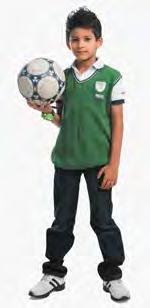
and
Recycle: Sell online, send scraps to be repurposed or swap clothes with friends.
Upcycle for longer use: Make new things from old

blankets,
Donate to charity.
Hand me
down: Pass down to younger family members and friends.
• More than 30% of old clothes end
can do
Did you know that…
year
time… Donate your textiles. You may not want that
anymore,
somebody else might! Save textiles from land
Reduce or repurpose your clothes to make new things.
Source: www.rescuetex.com

a Answer the questions.
• Who produced the poster?
• Why did they create it?
• What is it about?
b Answer the questions.
• What is the author’s opinion?
• How do they use facts to support their opinion?
• How does Rescuetex try to persuade the reader?
c Read the text. Do you think this opinion could be biased? Explain your ideas.
Rescuetex offers used clothing in big quantities. Companies can buy this clothing to make new materials. The size of the textile industry is huge. Every year, too many unsuitable or surplus textiles find themselves in landfill. Our collection and resale service stops this. The Rescuetex company is doing its bit to save the planet!
Key term support: toshow that something or someone is right
5 Share and compare opinions.
a Do you agree with Rescuetex that we can do better with clothes recycling?
b Do you think all fashion brands would agree with the idea of recycling clothes? Discuss why their opinions might be different.
point
Have your opinions about clothes recycling changed? Tell a partner what you have learned in this lesson.



1 Look at the picture. What do you think this place is? What happens here?
2 Create a comic strip to show what happens to Tex the T-shirt after he is thrown away.
3 Talk about clothes recycling.

a Look at the pictures of upcycled items. What do you think of them? Give your opinions.

Where are you going, Tex? Will you be upcycled, recycled or donated?
I’m not sure, but it will be an adventure!
b Do you think all countries recycle textiles the same way?


a bag made from recycled jeans in the UK
carpet bags in Isfahan market, Iran
Rajasthani traditional patchwork carpet in Jaisalmer, India

a Moroccan rag carpet in Marrakesh

4 Read and respond.
RESEARCH QUESTION: How are textilesrecycled in India? fabricreused

a What do you think the researcher wanted to find out?

b Read the text and answer the questions.
• What type of text is this?





















• What is the purpose of the information?
• Could it be helpful for the research question?
Fabrics find new function


Author: Professor Nye Lune, University of Canvas
Textiles are very important in India and are rarely thrown away. People reuse them to make beautiful and practical objects.


Recycling materials: People make yarn from recycled clothing. The yarn is used to make different textile products or fill cushions. Cotton waste is used to make paper or bandages. Wool and acrylic recycling in Panipat is the biggest textile recycling industry in India. They call this waste ‘shoddy wool’. They use it to make winter coats and blankets. Industrial textile waste is also sorted in Gujarat.

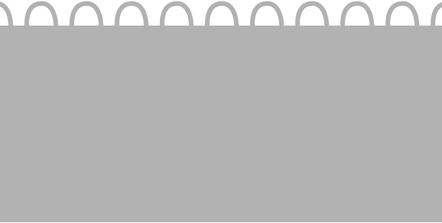


April 2023
Upcycling crafts: Old textiles are upcycled to make new products using traditional Indian embroidery. All over India, old saris are used to make cushion covers, blankets and bags. The Indian eastern states of West Bengal and Orissa are famous for Kantha blankets. They sew silk or cotton sari pieces together. In Jammu and Kashmir, yarn is used to embroider old woollen blankets. They become beautiful rugs or bags. Some nomadic tribes in Rajasthan use patchwork and mirrorwork to give a bright new look to their dresses.
a Look at the flowchart on the worksheet. Use it to discuss how you could evaluate this text.
b Answer the questions in the flowchart and complete the boxes at each step to show your reasons.
c What are the strengths and limitations of this source?
How helpful did you find the flowchart when evaluating the source?
•
•




 By Eunwoo Lee from old bottle
By Eunwoo Lee from old bottle
a mix of y yarns contains
d. This ult.
Most recycled fibres that are used for clothing come from old bottle tops, not old clothes. Why is that? Most clothes are a mix of yarns and accessories. Even a T-shirt that is 100% cotton contains threads, dyes and labels that are made from different materials. Labels, zips and buttons must be separated. This makes the process of sorting clothing slow and difficult. It needs skilled people or specialised equipment to identify the different materials. Only 1% of our clothes are currently recycled into new textiles. Scientists are experimenting with other ways to use the fibres from clothes including using it to make glue and building materials. They are also trying to make all material for clothing more sustainable.
4 Use the top tips to write a research question that will help you find solutions for sorting textiles for recycling.
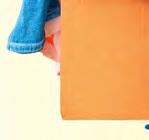

5 Read the article on the worksheet.
a What solution to the problem have they found in Prato? How does this make their fabric sustainable?

b Do you think this text is a reliable source of information? How could you check?
c Evaluate this source using the flowchart on the worksheet.




d What are the strengths and limitations of this source? Justify your response. Suggest how useful the source would be for your research question.
Talking point
What have you learned about or what skills have you improved relating to evaluating sources?




• Identify the main topic to be investigated.
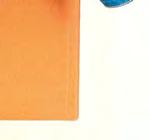
• Think about what you already know about the topic.
• Decide what you want to find out and if there is a problem that needs to be resolved.
• Turn your interest or problem into a question.
1
at the
has been there?
2 Read and respond.
a List the items in order of how long they take to
from fastest to slowest.
b What do you notice about the time different materials take to decompose?
3 Read and respond.
Most people love new clothes and want to be fashionable. People who make and sell clothes know this. They are always making new clothes for us to buy. They work quickly to follow new fashions and that’s why we call it ‘fast fashion’. Sadly, it means these clothes soon end up lying in textile waste piles. Fast fashion affects both the clothing industry and the environment, but not in a good way. Let’s take a look behind the wardrobe door at some facts that might surprise you. Can they persuade you to change your habits?
think
Globally we buy 80 billion new items of clothing every year.
The average person throws away 27 kg of clothes every year. Some have never been worn.
Global clothing production has more than doubled since 2000.
a Write answers to the questions.
• How many new clothes do we buy globally every year?
• What has happened to global clothing production since 2000?
b Explain fast fashion and the problems it causes.





































4
✓ Is the


✓
✓
✓
✓
the
the

Top

Patches of the
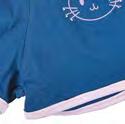



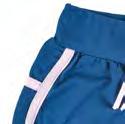







Cotton is the biggest non-food crop. The World Wildlife Fund says that it takes 20,000 litres to make just 1 kg of cotton. That’s a lot of water! These images show the results of cotton farming around a large lake. Although the land was good for growing cotton, there was not enough water or rainfall for the farming process. The water needed to grow cotton plants caused water levels to drop. This important fishing lake is now a desert, with poisonous salt and a very hot climate. People are trying to bring this area back to life but there is no quick solution. It will take a long time for the water to rise, fish to return, and for the quality of water and for the local climate to improve.
a Read the information on the worksheet. Highlight the main issues, causes and consequences of making cotton clothing.
World Wildlife Fund: an international organisation that tries to protect animals and habitats in danger poisonous: something that can hurt or kill living things
Pesticides and fertilisers: Farmers use chemicals to help cotton grow and keep insects away. If not used well, these can pollute the water and harm locals.
b Summarise the information on causes and consequences in a table.
Chemicals are used to grow and protect cotton. Chemicals can pollute water and harm locals.
5 Draw and present an ‘issue tree’.

a Use your research to make an ‘issue tree’. Show the causes and consequences to the environment of growing cotton.
b Present your issue tree to the class. Give other groups feedback on how well they communicated their information.

Talking point
Are you a good team player? Explain how you helped your team today.
Core problem: Cottongrowing can damage the environment.
Root causes: Too much water used and not enough rainwater.
Effects: Land becomes a desert – no fish, poisonous salt and local climate changes.


Read the final task and discuss the question.

Work in teams to choose and present an action that will raise awareness of the issues of sustainable fashion in your school community.


Present a clear, well-structured written awareness campaign to persuade and inform your audience. Use your research to support your campaign. Conclude with a personal reflection to explain any changes in your own opinions about the issues of sustainable fashion.
1 How do you think you will be successful in this task? Use the words in bold to help you.
a Make a list of all the issues and actions linked to sustainable fashion and textiles that you have learned about in this unit.






b Decide which issue you want to use for your awareness campaign. Ask yourselves these questions:
• Why does it interest you?
• What do you know about it?
• What actions could you suggest?
c How will you raise awareness? Look at the different ways in which you could present your information.
a What do you need to know about your issue? Write questions to help you learn more about your issue and get ideas for positive actions.
b Decide how you will organise your team research. Use these headings to help you.
about the issue
your research.
of the issue
for actions Images of actions
words from your questions
•
campaign.
with your team.
about the issue
actions.
your information.
what you mean.
•
about the issue
audience.
support your action.
a Complete the final task checklist. Use the worksheet.
b Share your checklist with your team. Do you all agree?
We explained the issue and action clearly.
The information was informative and persuasive.
The information was well organised and presented.
The campaign was appropriate for children.
We showed evidence of research.
c Take it in turns to say what you did to help the team. Do you all agree?
d Reflect on your personal perspective. Answer the questions on the worksheet.

Discuss these questions in pairs.


Key term perspective: a particular attitude towards or a way of seeing something
